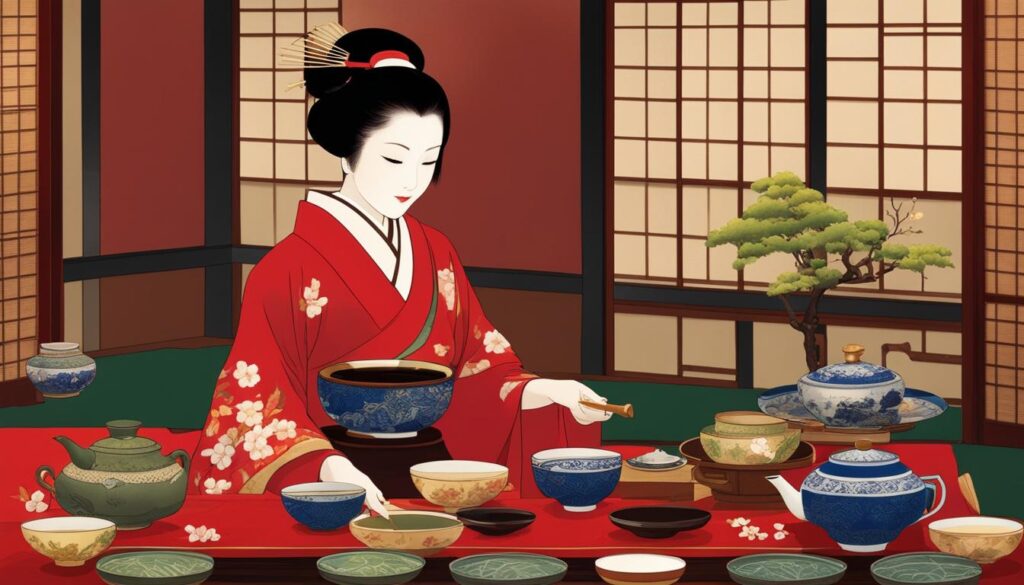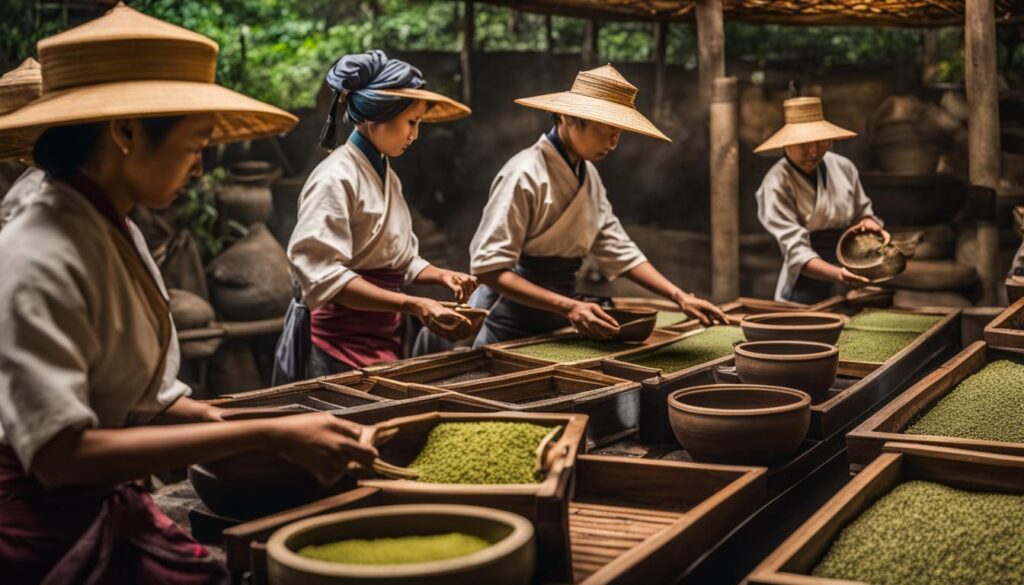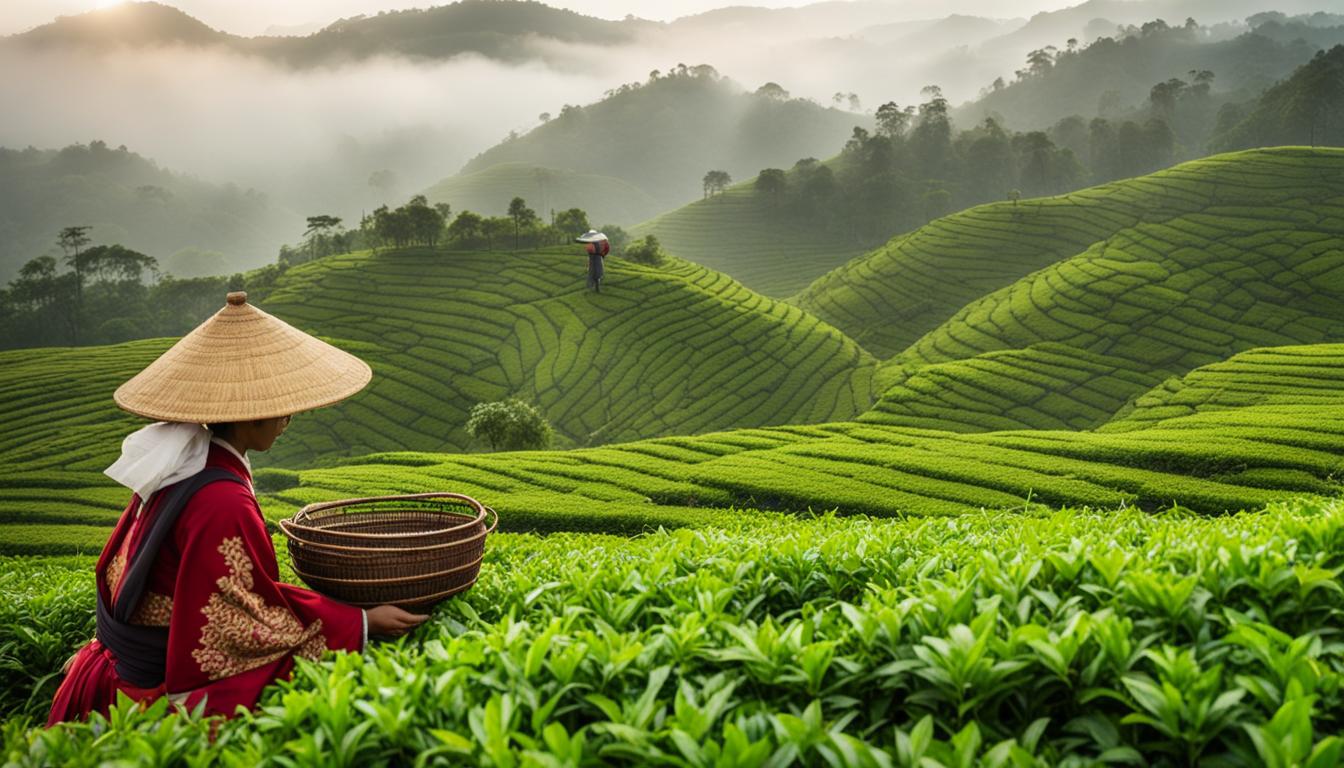Welcome to our latest article, where we embark on a journey through the rich world of tea making. From traditional techniques that have been passed down through the generations to innovative brewing methods that push the boundaries of flavor, we’ll explore the artistry that goes into creating this beloved beverage. Join us as we dive into the fascinating world of tea making in major tea producing countries.
Tea making is not just a process; it’s an art form that requires skill, precision, and a deep understanding of the craft. In major tea producing countries, such as China, India, and Japan, traditional tea making techniques have been perfected over centuries. These time-honored methods bring out the unique flavors and aromas of each tea variety, showcasing the expertise of the artisans behind them.
However, as times change, so does the way we brew our tea. Modern tea brewing methods have emerged, blending tradition with innovation. These methods utilize cutting-edge technologies and scientific advancements to create new and exciting flavor profiles. Whether you prefer the elegance of a traditional tea ceremony or the convenience of a contemporary brewing device, there’s a technique that suits every tea lover’s taste.
Key Takeaways:
- Tea making is an art that combines tradition and innovation.
- Major tea producing countries have perfected traditional tea making techniques.
- Modern tea brewing methods offer new and diverse flavor profiles.
- The art of tea making is a balance of skill, precision, and understanding.
- There is a brewing technique for every tea lover, from traditional ceremonies to contemporary devices.
The Historical Connection Between Tea and Art
Tea, often referred to as the art and science of tea brewing, has a deep-rooted connection with various forms of art in major tea nations such as China, Korea, and Japan. Tea was not just a beverage, but an integral part of cultural practices and artistic expressions. Tea ceremonies, known for their tranquil and meditative nature, were considered a form of performance art that embodied harmony, respect, and mindfulness.
In these tea ceremonies, every aspect, from the preparation of the tea to the serving and the act of drinking itself, was conducted with meticulous attention to detail. The process involved a delicate balance of aesthetics and technique, where the tea master’s skill and artistry were showcased. The utensils used, the way the tea was whisked, and even the choice of tea ware were all carefully chosen to create an atmosphere of beauty and serenity.
Artworks, such as ink paintings and calligraphy, were often displayed during tea ceremonies, further enhancing the artistic experience. The connection between tea and art can also be seen in paintings from the Western world’s golden age of tea, where tea parties were immortalized on canvas, capturing the elegance and refinement associated with tea drinking.
Tea and art have always been intertwined, with each influencing and inspiring the other. The art of brewing tea reflects the creative spirit and cultural values of a society, while art captures the essence and beauty of the tea experience.
The artistry in tea-making extends beyond the ceremony itself. Tea artisans in major tea nations have honed their skills over generations, passing down traditional brewing techniques and blending methods. These cultural tea-making practices not only preserve the heritage of tea but also contribute to the diversity and richness of the tea world.

The Evolution of Tea Artistry
Over time, the art of tea brewing has evolved, adapting to modern lifestyles and preferences. While traditional tea ceremonies still hold their significance, new forms of tea artistry have emerged. Tea sommeliers, for example, have mastered the art of pairing different teas with food, creating unique sensory experiences that blend flavors, aromas, and textures.
Contemporary tea houses and tea shops have also become platforms for tea artistry, where tea masters showcase their craftsmanship and innovative approaches to tea brewing. These spaces provide opportunities for tea enthusiasts to explore and appreciate tea in a modern and dynamic setting.
The historical connection between tea and art continues to thrive today, with tea still regarded as a medium of inspiration and creativity. Whether through traditional tea ceremonies or modern tea artistry, the art and science of tea brewing will always be a source of fascination and appreciation for tea lovers worldwide.
The Art and Craft of Tea Brewing
| Country | Tea Artistry | Cultural Tea Making Practices |
|---|---|---|
| China | Tea ceremonies embodying harmony and tranquility | Gongfu tea brewing and decorative tea leaves |
| Korea | The beauty of simplicity in tea ceremonies | Tea bowls and folding tea mats |
| Japan | The meditative nature of the Japanese tea ceremony | Matcha preparation and zen-inspired tea rooms |
The Changing Times and the Lost Art of Tea
Tea, once regarded as a revered art form in traditional tea-producing countries and the Western world, has experienced a decline in appreciation over time. The mass market production of tea has led to a loss of quality and authenticity, as artificial flavors and mass production techniques have taken the forefront. The artistry of tea blending and processing, once cherished and carefully honed, has been overshadowed by convenience and cost-effectiveness.
However, amidst the changing times, there are still dedicated small-scale tea producers who strive to preserve the art of tea making. These artisans craft teas with meticulous care and respect for traditions, ensuring that the artistry of tea blending and processing remains alive and flourishing. By employing traditional tea processing art in key countries, they honor the true essence of tea and offer a glimpse into the rich heritage of tea making.
“Tea is not just a beverage; it is a reflection of culture, history, and art. The skill of tea blending and processing is passed down through generations, a testament to the dedication and passion of tea artisans. It is our responsibility to appreciate and support these artisans who continue to uphold the art of tea making.”
The Skill of Tea Blending and Processing
One of the most crucial aspects of tea making art is the skill of tea blending and processing. Tea artisans carefully select and blend teas to create unique flavors and aromas. The process involves expertise in evaluating the characteristics of various tea leaves, understanding the nuances in their flavors, and blending them in harmonious combinations.
Masterful tea blending requires patience, creativity, and a deep understanding of the different tea types and their distinctive qualities. Through precise measurements and techniques, tea artisans create blends that capture the essence of each tea while harmonizing the flavors to produce a well-balanced cup.
| Country | Tea Processing Art |
|---|---|
| China | A centuries-old tradition of hand-picked and hand-processed teas, with each region specializing in specific processing techniques. |
| India | Notable for its bold and robust teas, with unique processing methods like the crush-tear-curl (CTC) technique used for black teas. |
| Japan | Renowned for its meticulous tea processing techniques, such as steaming the leaves for green tea to preserve their vibrant color and delicate flavor. |
The skill of tea blending and processing is a labor of love, a craft that brings together tradition, expertise, and passion. It is through the dedication of these tea artisans that the art of tea making continues to evolve and captivate tea enthusiasts worldwide.

The Art of Tea Making in Different Tea Types
When it comes to the craft of making premium teas, each type of tea requires a unique set of skills and techniques. “The Art and Craft of Tea” delves into the mastery of tea production techniques, providing a comprehensive understanding of the intricate process behind creating exceptional teas.
Let’s explore the specific techniques involved in making different tea types:
1. Green Tea:
Green tea is known for its fresh, grassy flavor and vibrant green color. To create green tea, the leaves are quickly heated to halt oxidation and preserve their natural flavors. The leaves are then rolled and dried to enhance their aroma. The craft of making green tea involves precise timing and temperature control to achieve the perfect balance of flavor and aroma.
2. Black Tea:
Black tea is a robust and full-bodied tea with rich flavors. The process begins with withering the tea leaves to remove moisture. The leaves are then rolled to release enzymes and stimulate oxidation, which gives black tea its distinctive flavor and dark color. The oxidation process is carefully monitored to achieve the desired level of fermentation. Finally, the leaves are dried to halt oxidation and lock in the flavors.
3. Oolong Tea:
Oolong tea is a partially oxidized tea that falls between the categories of green and black tea. The leaves undergo a delicate process of withering and rolling, followed by partial oxidation. The oxidation level is precisely controlled to create a variety of oolong tea flavors, ranging from light and floral to dark and toasty. The final step involves drying the leaves to stop oxidation and preserve the tea’s nuanced flavors.
4. White Tea:
White tea is the least processed of all tea types. The delicate buds and young leaves are plucked and allowed to wither naturally, which gives white tea its delicate flavor and subtle floral notes. The leaves are then gently dried to retain their natural freshness. The art of making white tea requires careful handling and minimal processing to highlight the tea’s delicate characteristics.
Each tea type in the world of tea making is a testament to the mastery of tea production techniques. From the precise timing and temperature control in crafting green tea to the artful oxidation process in creating black tea, every step contributes to the final flavor and aroma of the tea. “The Art and Craft of Tea” celebrates the expertise and passion of tea makers who dedicate their lives to perfecting the art of tea making.
Table: Tea Types and their Characteristics
| Tea Type | Flavor Profile | Processing Method | Color |
|---|---|---|---|
| Green Tea | Grassy, Fresh | Heating, Rolling, Drying | Light Green |
| Black Tea | Robust, Full-bodied | Withering, Rolling, Oxidation, Drying | Dark Brown to Black |
| Oolong Tea | Varied (Light to Dark) | Withering, Rolling, Partial Oxidation, Drying | Light to Medium Brown |
| White Tea | Delicate, Subtle | Withering, Drying | Light |
The table provides a snapshot of the different tea types and their characteristics. While each tea type has its unique flavor profile, they all require careful craftsmanship to achieve the desired taste and appearance. Whether you prefer the grassy freshness of green tea, the bold flavors of black tea, the nuanced notes of oolong tea, or the delicate subtlety of white tea, each sip tells a story of the art and skill behind its creation.
Traditional Tea Making Techniques vs. Modern Tea Brewing Methods
The art and craft of tea making in Asia is a delicate process that combines centuries-old traditions with modern innovation. From the skill of tea blending and processing to the art and science of tea brewing, artisans in Asia have mastered the techniques that make tea a truly captivating beverage.
In traditional tea making techniques, artisans focus on preserving the integrity of the leaves and extracting the best flavors. Hand-picking and careful processing techniques ensure that each leaf is handled with precision and care. Tea leaves are often rolled, shaped, or fermented to achieve specific flavors and aromas. The mastery of tea production techniques can be seen in the exquisite teas that are created, each with its own unique character and taste.
On the other hand, modern tea brewing methods offer a blend of tradition and convenience. Innovative teaware and brewing equipment have made it easier than ever to prepare a perfect cup of tea. From electric kettles with temperature control settings to tea infusers and brewing timers, these tools help tea enthusiasts achieve consistent and flavorful brews. Modern methods also allow for experimentation and creativity, with tea cocktails and specialty blends becoming popular among tea lovers.
Ultimately, the choice between traditional tea making techniques and modern tea brewing methods comes down to personal preference. Some tea drinkers prefer the time-honored rituals and craftsmanship associated with traditional methods, while others appreciate the convenience and innovations offered by modern techniques. Regardless of the approach, the artisanship and dedication that go into tea production in Asia are what make this beverage a true work of art.
Conclusion
The art and craft of tea making is truly something special. It encompasses not only the rich history and culture of major tea producing countries, but also the creativity and skill of those who dedicate themselves to the craft. From the traditional tea making techniques that have been passed down for generations, to the modern tea brewing methods that blend tradition with innovation, tea making is a true art form.
Throughout the book “The Art and Craft of Tea,” we have explored the various aspects of tea making in major countries. We have delved into the different types of tea, the specific processes involved in making each type, and the mastery required to produce premium teas. We have also examined the changing landscape of the tea industry, and the importance of preserving the authenticity and artistry of tea blending and processing.
Whether you are a tea enthusiast or simply curious about the art of tea making, “The Art and Craft of Tea” is a comprehensive guide that will deepen your understanding and appreciation. It offers a wealth of information on tea types, processing techniques, and brewing methods, ensuring that you can embark on your own tea journey with confidence and curiosity. So, why not immerse yourself in the world of tea and discover the art and craft of tea making in major countries?
FAQ
What does “The Art and Craft of Tea” book cover?
The book provides a comprehensive introduction to tea, covering the history of tea, the basics of tea processing, different types of tea, and the main growing regions. It also delves into the art and technique of tea brewing, as well as tea cocktails and pairings.
How does tea relate to art?
Tea has a long history of being associated with art in tea-producing countries. It was considered a form of art and was revered for its ability to inspire and purify the mind and soul. The production, brewing, serving, and drinking of tea were all considered an art form.
Has the appreciation for the art of tea diminished?
Over time, the appreciation for the art of tea has diminished, particularly in traditional tea-producing countries and the Western world. Mass market production has led to a loss of quality and authenticity, with a focus on artificial flavors and mass production techniques.
What does “The Art and Craft of Tea” book offer in terms of tea types?
The book provides detailed information on different tea types, including yellow, green, white, black, oolong, and dark tea. It explores the specific techniques and processes involved in making each type of tea, highlighting the craftsmanship and mastery required.
Does the book cover traditional and modern tea making techniques?
Yes, the book provides insights into both traditional tea making techniques and modern tea brewing methods. It discusses how tea is crafted and blended in Asia, highlighting the importance of skill and technique in tea production. It also explores the art and science of tea brewing, emphasizing the balance between tradition and innovation.





